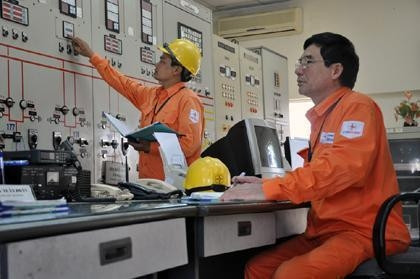While chairing a meeting on March 18 with the Electricity of Vietnam (EVN) and relevant ministries, agencies and businesses in the electricity sector, Deputy PM Hai noted that the sector is currently facing a number of difficulties caused by water shortages in stabilising the supply of electricity during the 2013 dry season.
He asked the Ministry of Industry and Trade (MoIT) to direct power plants nationwide to closely monitor the weather and analyse hydrologic data to balance the water supply for both agricultural production and the daily lives of people for hydropower generation, as well as to maintain reasonable supply and demand of gas and coal for thermal power plants.
In case of necessity, there should be an extra 500 million kWh of power mobilised from fuel oil (FO) in order to stabilise supply during the dry season, Hai added.
The Deputy PM also made requests to strengthen the management, operation and maintenance of power plant’s turbines to ensure their highest level of availability, in addition to raising public awareness of energy saving, to reduce power losses, and to promote efficient energy use.
Reports from the MoIT and EVN show that electricity generation in the first two months of this year is in a struggling situation, particularly hydroelectricity as the water storage in hydroelectric lakes is lower than expected.
At the end of February, the water level upstream of hydropower reservoirs nationwide was lower than the same period in 2012. In particular, the Central Highlands lakes are in heavy drought with water levels lower than 11-84%, while water frequency in southern lakes only reaches 73-98%.
During the last winter-spring crop, reservoirs across the country had discharged about 5 billion m3 of water to serve for agricultural production activities. As of March 15, the total hydropower output is expected at about 5.8 billion kWh, fell by 759 million kWh.
EVN said that the system can still provide sufficient power supply to meet the demand if abnormal situations related to electricity additional charge and power distribution do not occur.
As of mid-March, the total additional charge reached 21.104 billion kWh, a daily average of 235 million kWh and an increase of 11.3% over the same period last year.
















